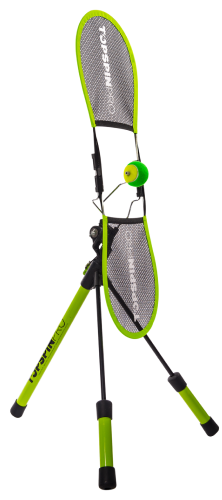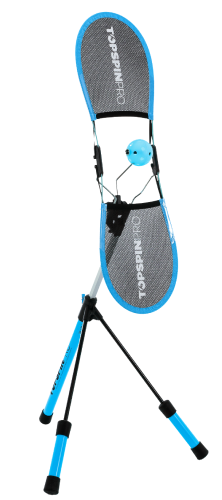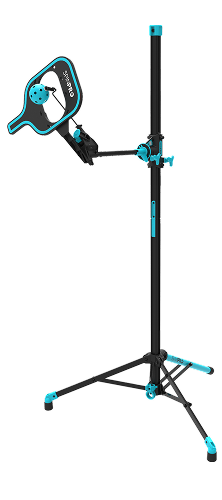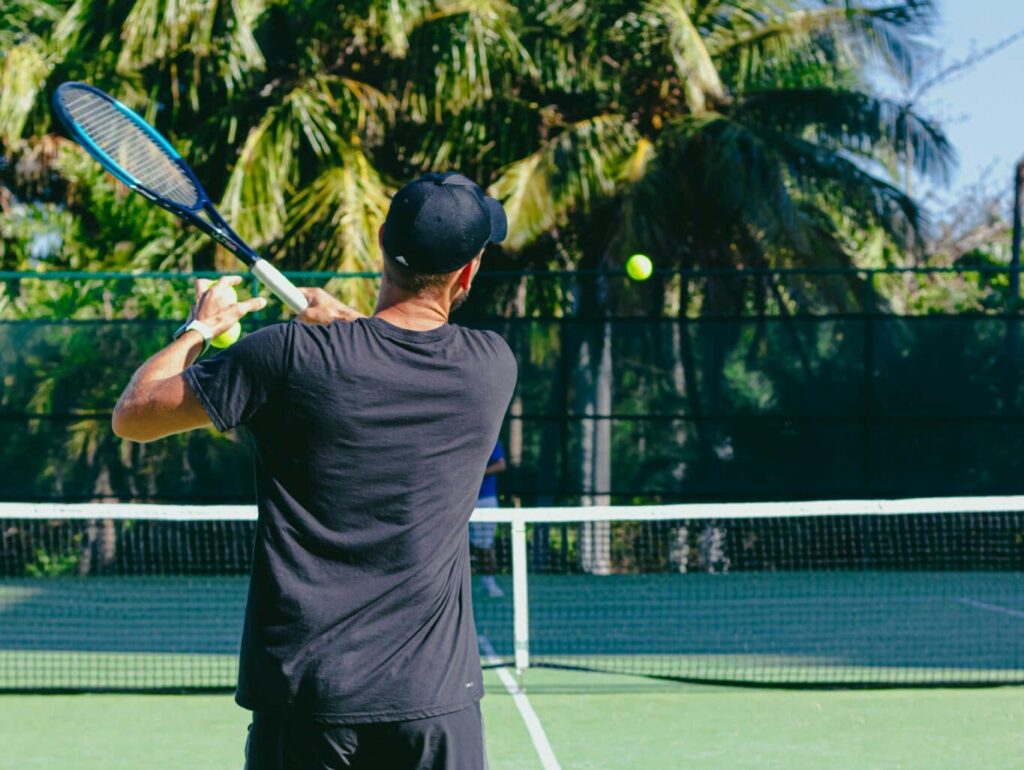
Stay in the loop!
Want to be updated when we publish? Be sure to sign up for our newsletter. No spam, we promise!
Topspin is crucial for modern tennis. It adds control to your power, consistency, and the ability to hit with greater margin over the net. However, many players struggle to generate effective topspin due to common mistakes in their technique and approach. Here are the biggest mistakes people make when trying to learn the topspin forehand and how to correct them.
1. Expecting Instant Results
There's a reason this tops the list and it’s not just about topspin. Most players expect instant results when learning something new, but mastering topspin (or any tennis skill) takes time and countless repetitions. Unfortunately, there’s no shortcut to improvement, even for the most naturally gifted players. Consistency and practice are the real keys to success!
Fix: Be patient and practice topspin-focused drills regularly. Using tools like the TopspinPro or hitting against a wall can help reinforce the correct technique over time. Here's a guide to help you get in some extra reps and improve your topspin when you don't have a partner to practice with: How To Practice Tennis Alone. Also below is an easy drill you can do to learn to add topspin to the ball:


2. Contact Point Too Close
The contact point is the most important part of any tennis shot. It's the foundation to hitting a great shot and if this is off it doesn't matter how good the rest of your swing or footwork is!
On groundstrokes hitting the ball too far back or to the side of the body can affect the ability to generate topspin effectively. Players who hit the ball too late often struggle to accelerate up the ball.
Fix: Make contact in front of the body, ideally at waist to chest height (see image below), and almost with your arm at full stretch (depending on which grip you use, see video below). Using a target or visual reference point can help develop a consistent contact point so make sure you know what your contact point should be.
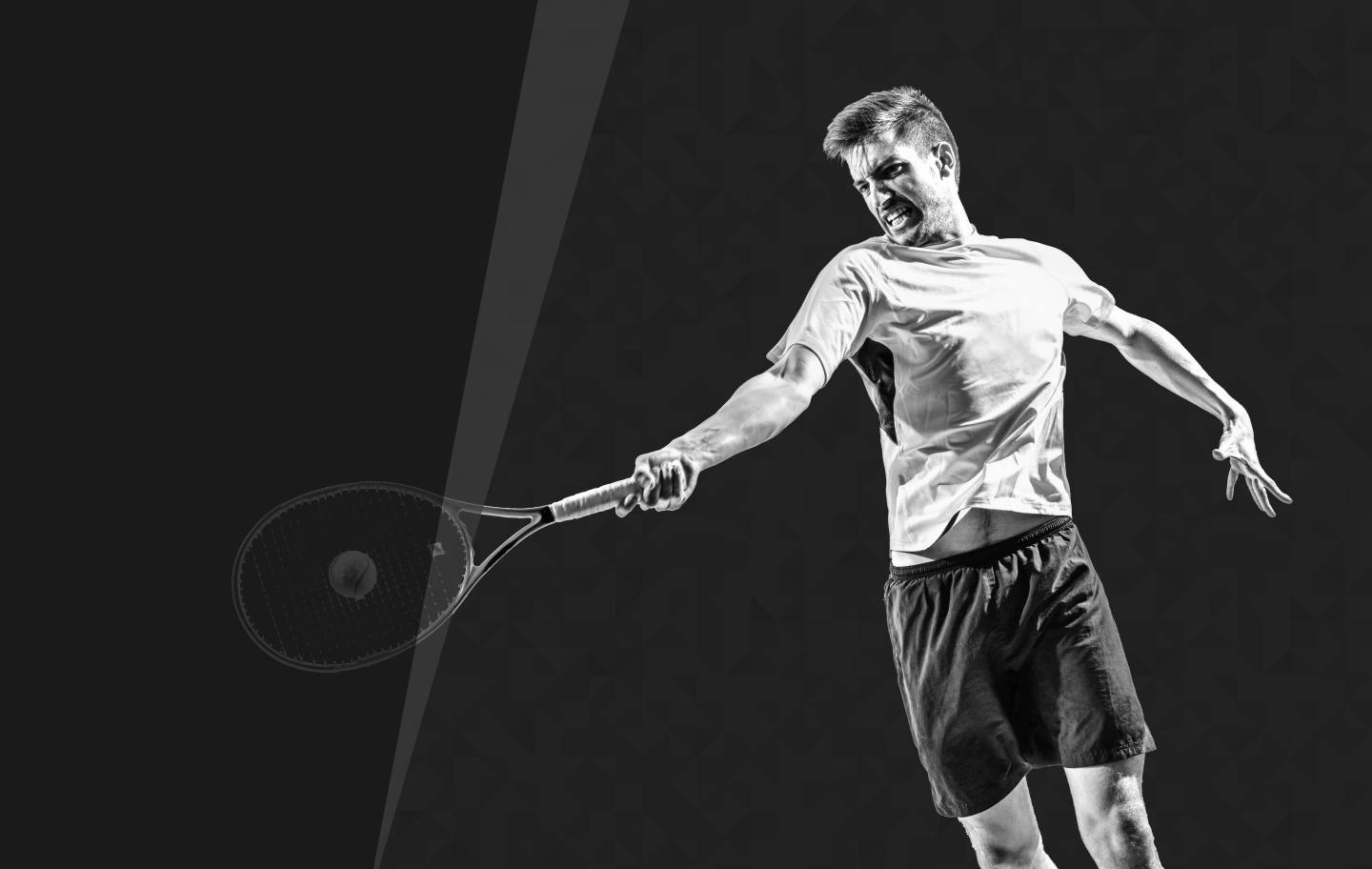
3. Grip Changes
One of the biggest mistakes people make when learning something new is completely changing their grip. Grip changes take longer to master than new technique so unless you are wildly off with your grip, stick with what you have.
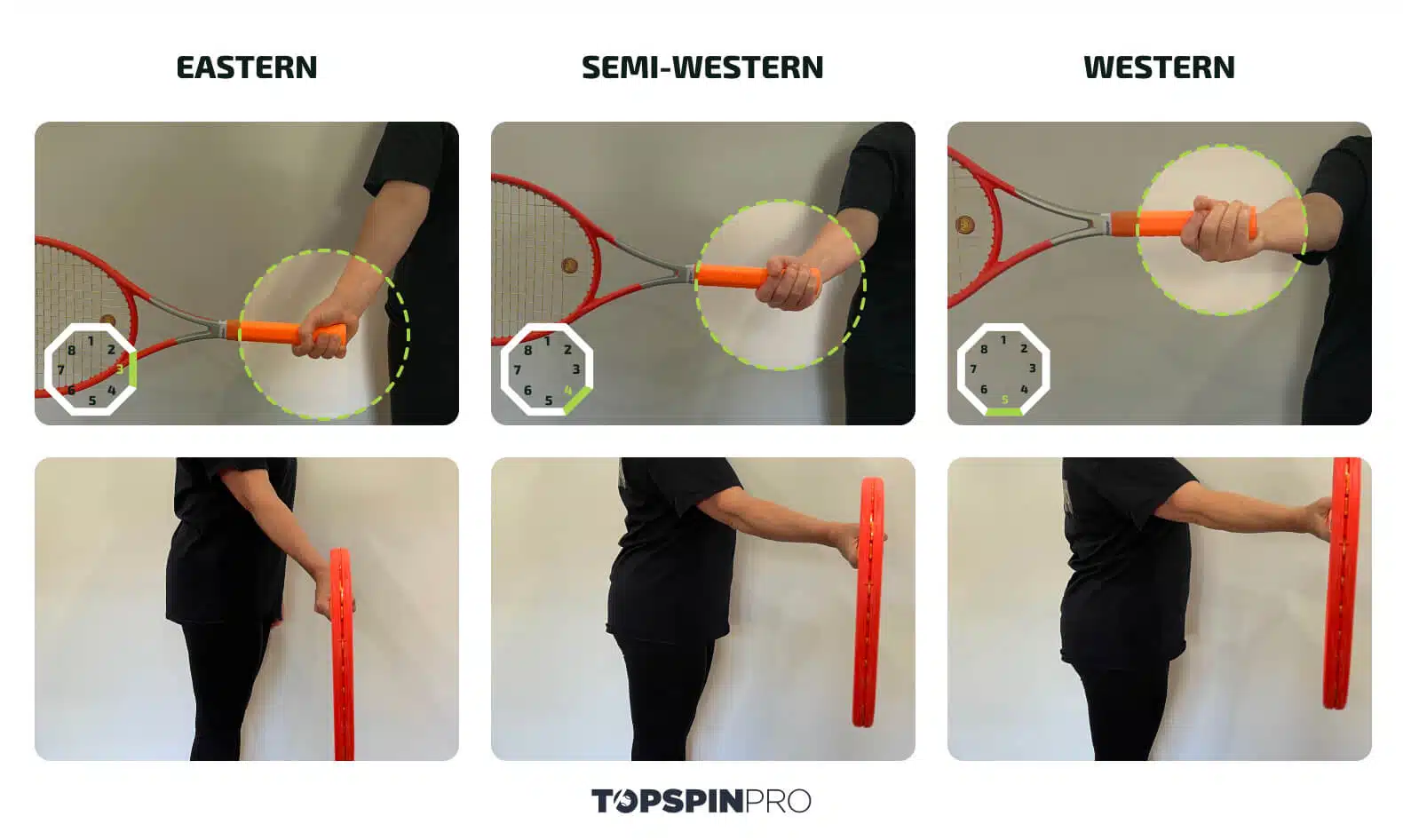
Your grip also affects your contact point. See the image above of the forehand contact point by grip. The more extreme your grip is the further in front and higher your contact point will be. Take a look at the video guide below to see what is the right grip for you.
Fix: Know your grip and contact point. Unless you are using continental grip try to stick with the grip you have and master the best contact point.


4. Muscling The Ball
Generating topspin requires fast racket head speed, but many players make the mistake of muscling the ball, trying to hit it with sheer force. The key to effective acceleration is a relaxed swing. The looser you are, the faster you can whip the racket up the back of the ball. The more effortlessly you accelerate in this upward motion, the more spin you’ll generate, giving you better control and consistency.
Fix: Accelerate up the ball with a relaxed wrist and loose arm, ensuring that the racket whips through the contact zone.
5. Overuse of the Wrist
Excessive wrist snapping or flicking can cause inconsistency, mishits, and even injuries. Yet this is a common occurrence with many players. Instead, keep your wrist relaxed at contact while allowing your arm to naturally pronate (rotate). This enables the racket to move smoothly, like a windshield wiper, generating controlled topspin without straining your wrist (see image below).
Fix: Don't try to force the spin. Stay relaxed and trust your racket will apply spin by rolling your strings up the back of the ball.

6. Short Follow Through
Many players cut their swing short, often due to excessive tension in the arm. A relaxed swing allows the natural weight of the racket to extend the follow-through effortlessly after acceleration. In contrast, forcing a shorter swing requires contracting the muscles twice. Once to accelerate and again to decelerate which wastes energy and increases injury risk. A fluid, relaxed follow-through ensures the racket continues accelerating through contact, maximizing spin and control.
Fix: Finish the stroke with the racket over the shoulder or across the body. Hold a pause at the end of the swing the ensure you are fully relaxed.
7. Hitting Through Instead of Up
A common misconception is that topspin comes solely from hitting forward. While forward momentum is essential, true topspin is generated by a steep upward motion at the point of contact. The ideal topspin forehand swing blends both forward and upward movement, with the ratio depending on the desired shot. For flatter, more powerful shots, a more forward swing is needed. To generate heavy topspin, a steeper upward swing is required (see image below).
Fix: Focus on swinging from low to high, ensuring the racket moves up the ball instead of just forward. Drills with the TopspinPro or shadow swings emphasizing an upward finish can help.
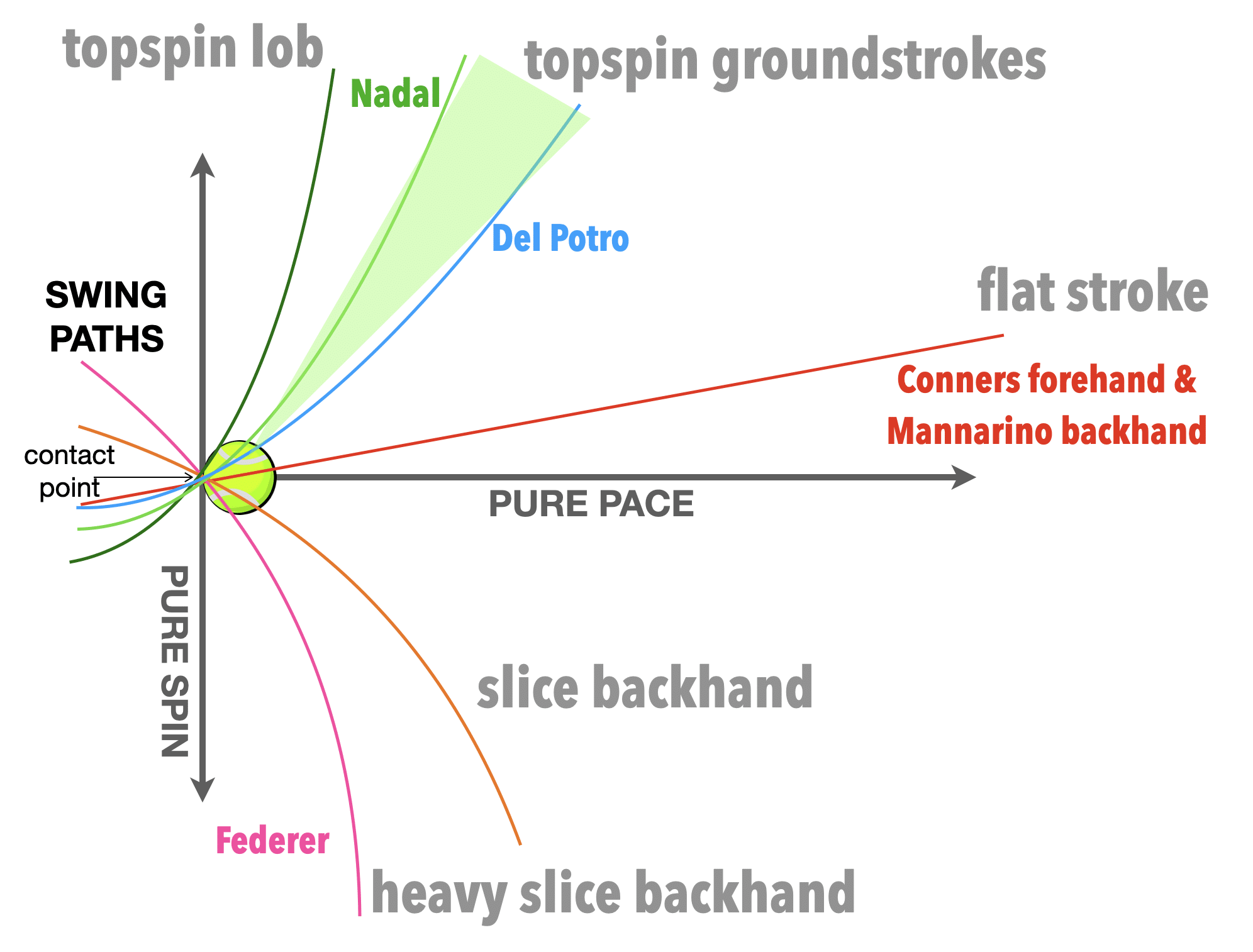
8. Poor Body Use
Proper body positioning and footwork are essential for generating topspin and maximizing power through the kinetic chain. Many players make the mistake of relying solely on their arm to create spin, neglecting the legs and body rotation. Without good positioning, they end up arming the ball instead of using their whole body efficiently.
Footwork plays a crucial role. If a player is off-balance or reaching for the ball, they won’t be able to engage their legs and core effectively, leading to weaker, inconsistent shots. The key is to stay low with bent knees, load the legs, and drive up through the shot, allowing energy to transfer from the ground up.
Quick, controlled footwork adjustments ensure optimal positioning before contact, making it easier to unleash power while maintaining spin.
Fix: Drills like ladder exercises and shadow swings help improve footwork efficiency, ensuring a seamless connection between balance, power, and topspin.
Conclusion
Mastering topspin requires attention to grip, swing path, body mechanics, and patience. By avoiding these common mistakes and implementing the suggested fixes, players can develop a more effective and reliable topspin shot. If you have identified more than one of these mistakes in your game, we recommend just working on one of them at a time. Stick with the process, and soon, topspin will become a natural part of your game, helping you hit with more confidence and control!!
If you need extra help with your topspin forehand check out our courses below. You can also find a full in depth guide to topspin here: Why Topspin In Tennis?
TOPSPINPRO COURSES FOR BEGINNERS
If you are a beginner/improver and want some help with your groundstrokes take a look at our TopspinPro Online Courses. Check them out for some in-depth help with developing your shots:


FAQs
-
Why is topspin important in modern tennis?
Topspin is crucial for modern tennis as it adds control to your power, consistency, and the ability to hit with a greater margin over the net. It allows players to hit more aggressively while maintaining accuracy and reducing the risk of errors.
-
What is a common mistake players make when learning topspin?
A common mistake is expecting instant results. Mastering topspin takes time and countless repetitions. Consistency and practice are key to improvement, and tools like the TopspinPro or hitting against a wall can help reinforce the correct technique over time.
-
How does the contact point affect topspin generation?
The contact point is crucial for generating topspin effectively. Hitting the ball too far back or too far in front of the body can hinder topspin. The ideal contact point is in front of the body, at waist to chest height, allowing for better acceleration up the ball.
-
How can grip influence topspin shots?
Grip changes can take longer to master than new techniques, so it’s recommended to stick with your current grip unless it’s significantly off. Your grip also affects your contact point, with more extreme grips requiring contact further in front and higher.
-
How does body positioning and footwork impact topspin?
Proper body positioning and footwork are essential for generating topspin and maximizing power. Good footwork ensures optimal positioning before contact, allowing players to use their whole body efficiently, rather than just arming the ball, leading to more consistent and powerful shots.
Enjoyed this article?
Be sure to sign up for our newsletter and we'll keep you up to date about new posts
